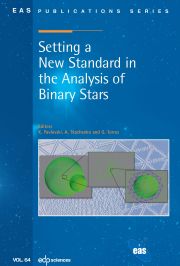Article contents
The Minimum Mass for a Dwarf Galaxy
Published online by Cambridge University Press: 11 July 2011
Abstract
A widely held view is that a “mini halo” with much less than 108 M⊙ in dark matter is unlikely to retain any baryons because even a single SN event is expected to sweep out all of the gas. But we show that a clumpy medium is much less susceptible to SN sweeping (particularly if it is off-centred) because the coupling efficiency of the explosive energy is much lower than for a diffuse interstellar medium. With the aid of the sophisticated 3D hydro code Fyris, we show that baryons are retained and stars are formed in dark matter haloes down to 3 × 106 M⊙. The gas survives the SN explosion and is enriched with specific abundance yields of the discrete events. The smallest galaxies may not contribute a large fraction of baryons and dark matter to the formation of galaxies. But they are likely to carry important chemical signatures that were laid down in the earliest epochs of star formation, as we show. We discuss the results in light of the newly discovered, very metal poor, damped Lyα systems and ultra-faint dwarf galaxies.
- Type
- Research Article
- Information
- European Astronomical Society Publications Series , Volume 48: CRAL-2010 A Universe of Dwarf Galaxies , 2011 , pp. 397 - 404
- Copyright
- © EAS, EDP Sciences, 2011
References
- 10
- Cited by


